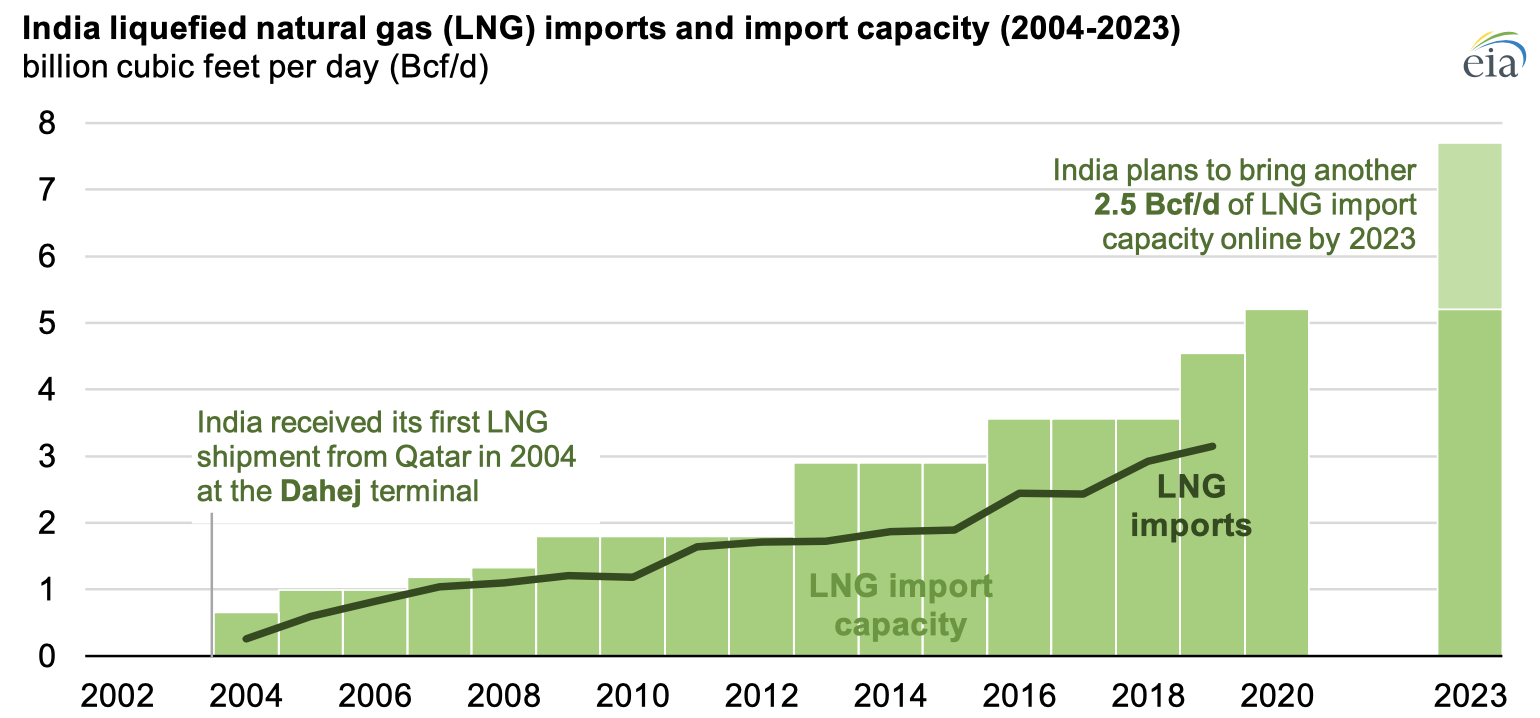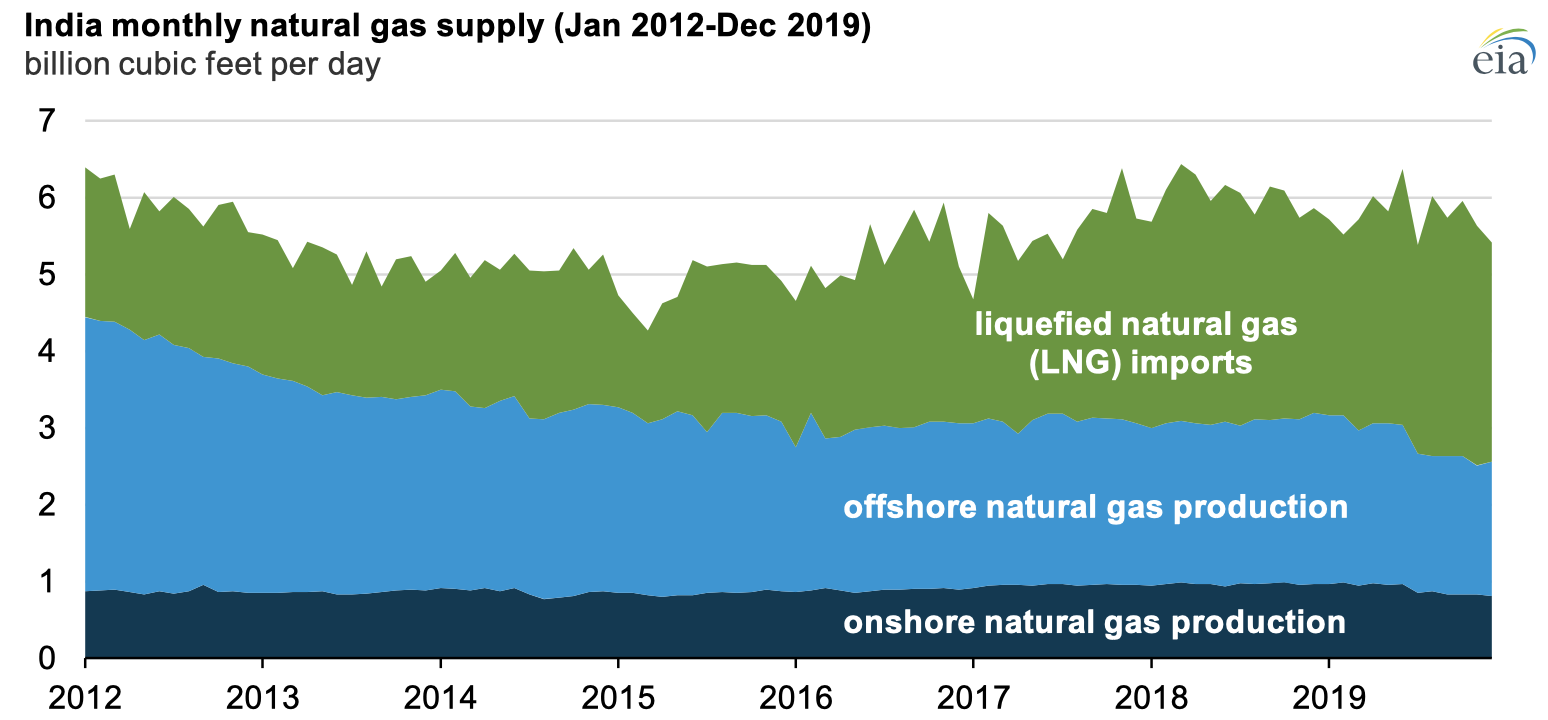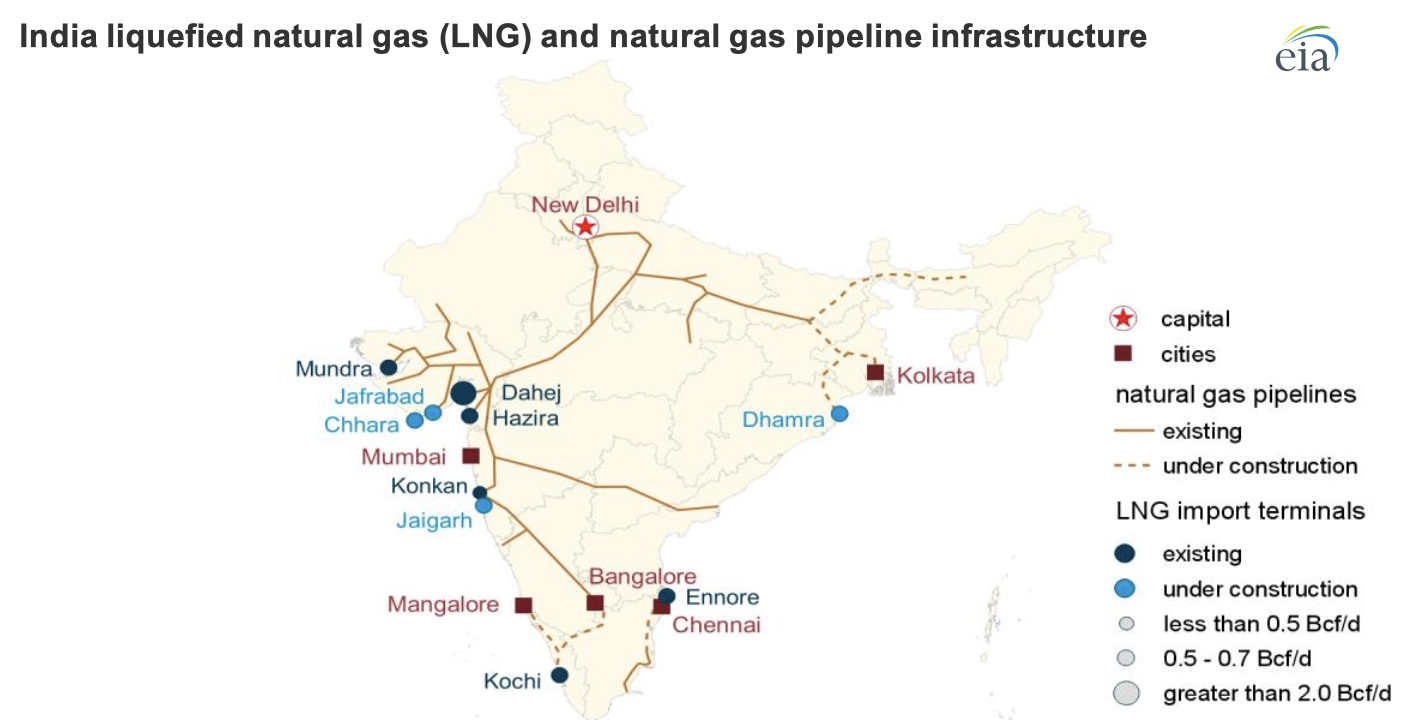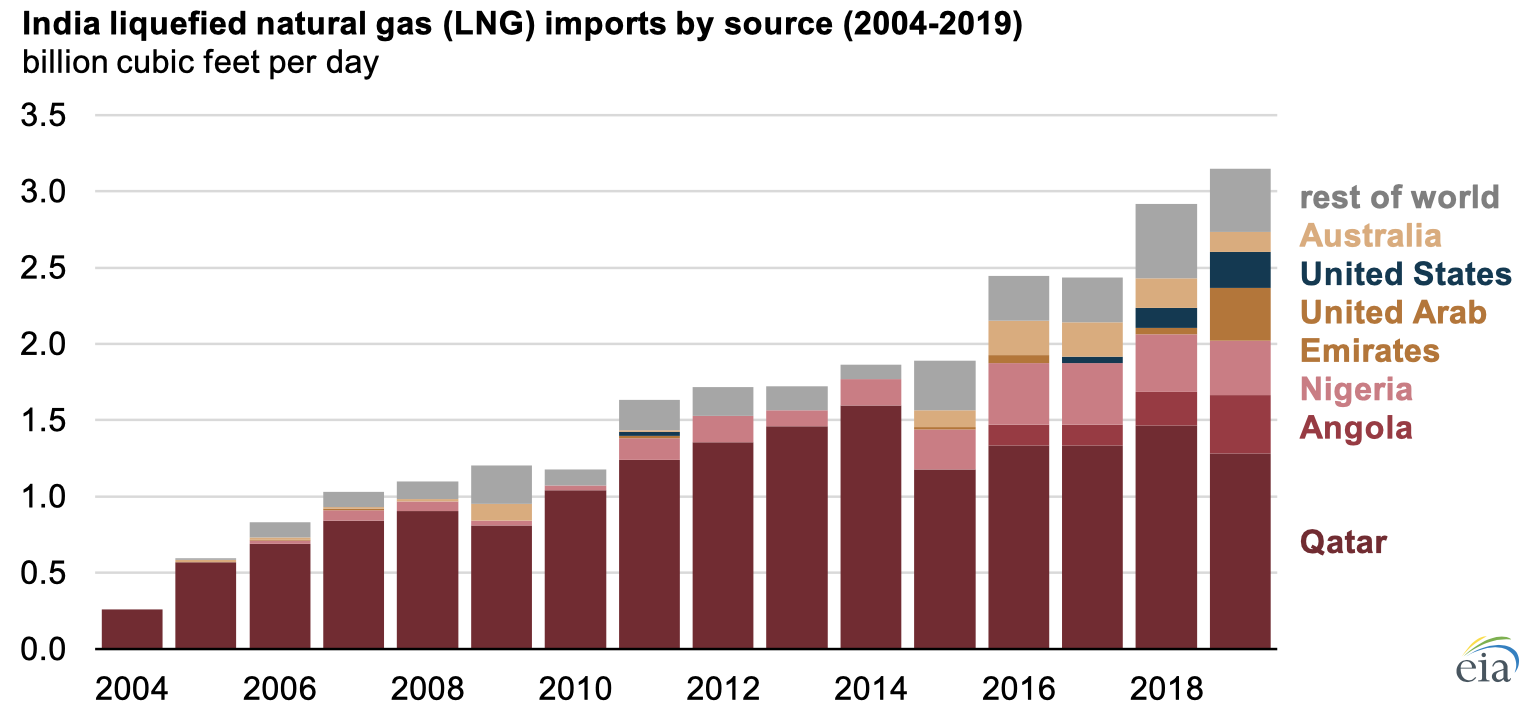India has been the world’s fourth-largest importer of liquefied natural gas (LNG) since 2011, gradually increasing LNG imports as the country’s domestic natural gas production declined and domestic consumption increased. India’s LNG import capacity more than doubled during the past 10 years, and the U.S. Energy Information Administration (EIA) expects it to increase by a third in the next 3 years as regasification facilities currently under construction come online. However, the construction of domestic pipelines to move LNG from the coastal import facilities to major demand centers further inland has experienced delays. Future growth in India’s LNG imports will depend on the timely completion of natural gas pipeline networks.

In recent years, growth in India’s LNG imports has been driven by declining domestic natural gas production and growing consumption, particularly in the industrial sector (where natural gas is used in the production of fertilizer) and City Gas Distribution network. India’s domestic production of natural gas, 70% of which is located offshore, has experienced a steady decline, from 4.4 billion cubic feet per day (Bcf/d) in 2012 to 2.9 Bcf/d in 2019, and it has limited potential for further growth.

Currently, natural gas constitutes a relatively small share (6%) of India’s total primary energy consumption. In 2019, the Indian government set a goal to increase the share of natural gas from 6.2% in 2018 to 15% by 2030. EIA expects future growth in consumption primarily in the industrial and power generation sectors.
Earlier this year, India commissioned its sixth LNG import terminal, bringing the total regasification capacity to 5.2 Bcf/d. Four more LNG import terminals—all but one of which are on the western coast (Arabian Sea)—are currently under construction and are expected to come online by 2023, adding 2.5 Bcf/d of LNG import capacity.

Future growth in India’s LNG imports is contingent on connecting LNG regasification terminals on coasts to demand centers further inland via pipeline. Northwestern India has a highly developed natural gas infrastructure, and both Hazira and Dahej are the most highly utilized terminals in India (at 97% and 110%, respectively). However, the southern and eastern regions of the country lack pipelines to move natural gas from coastal LNG import terminals to major demand centers further inland.
The lack of pipeline infrastructure near LNG terminals is affecting both existing and planned LNG terminals. In southwestern India, LNG imports to the existing Kochi terminal are currently limited to local markets; pipelines expanding to nearby Mangalore are expected to come online in 2020 and Banagalore in 2022. Similarly, new pipelines are planned to connect the existing Ennore LNG terminal to areas beyond nearby Chennai. In northeastern India, new pipelines that are planned to come online within the next three years would connect the Dhamra LNG terminal currently under construction to nearby Kolkata as well as existing pipelines in northwest India.

Although India has expanded the number of countries it imports LNG from since 2016, Qatar remains the main LNG supplier to India because of a relatively short transportation distance: an LNG tanker can leave Qatar and reach India in three days. India’s LNG imports from the United States have grown to a total of 0.25 Bcf/d in 2019 and are expected to grow as new commercial contracts are considered between the two countries. In 2019, India ranked as the seventh-highest destination for U.S. LNG exports, receiving 5% of the U.S. total last year.
Principal contributor: Victoria Zaretskaya








